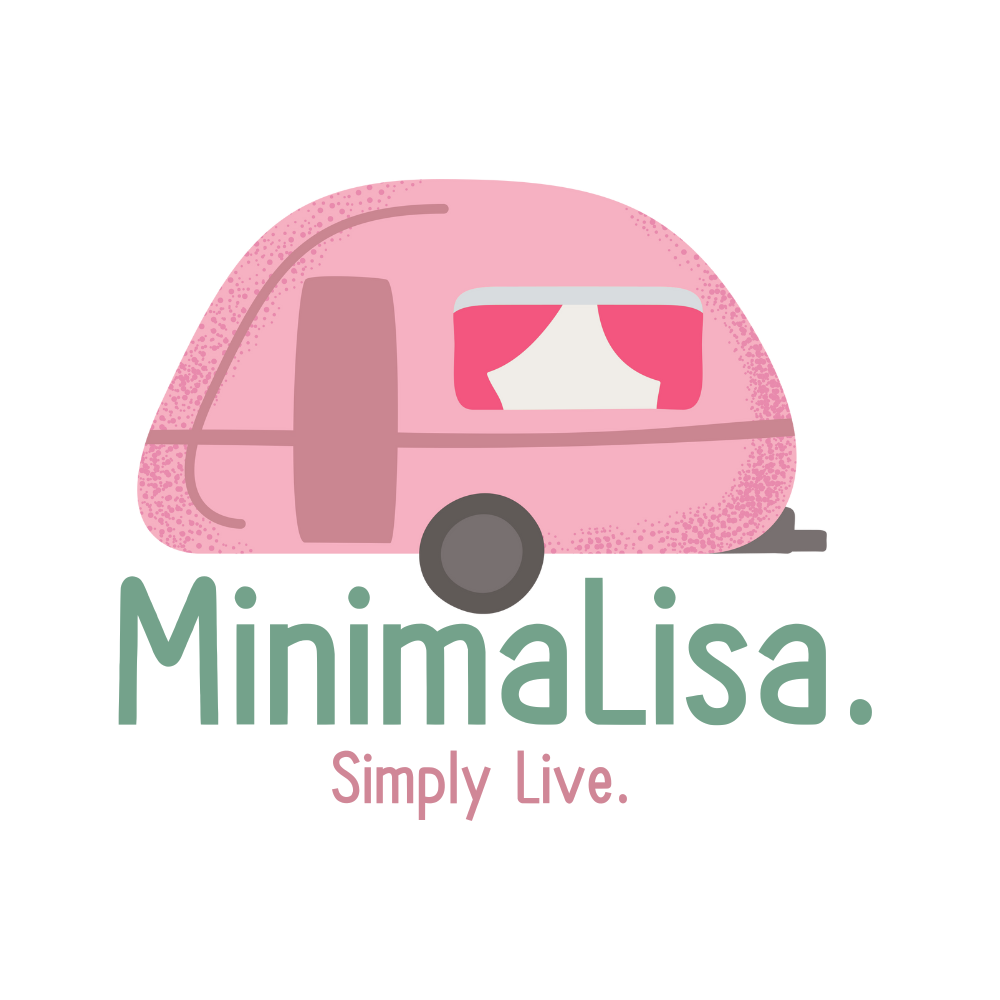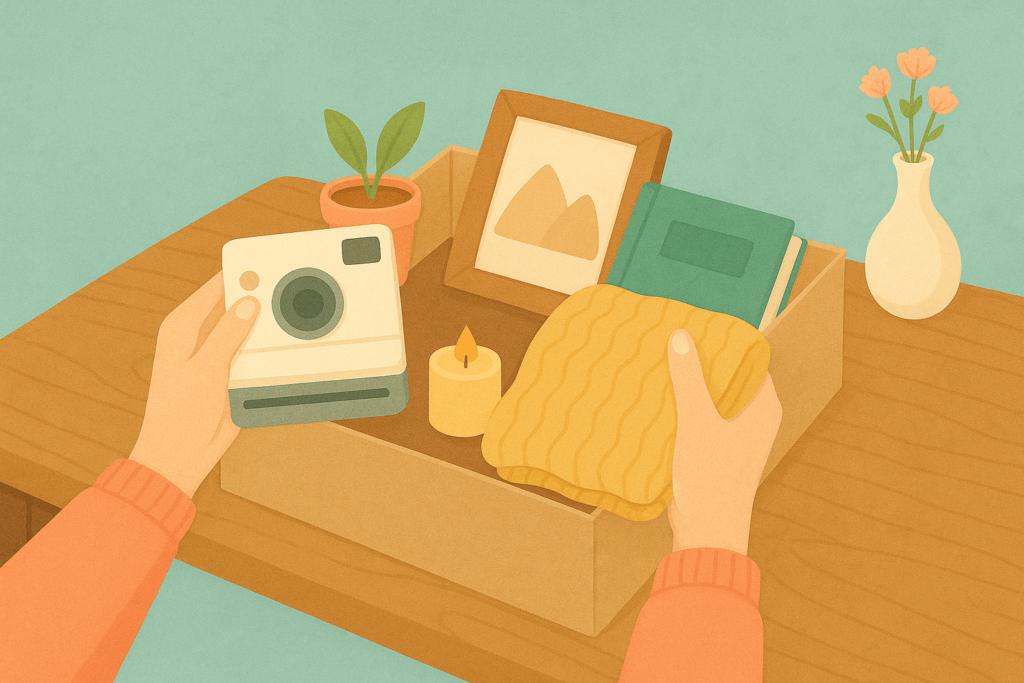Letting Go of Things – How Do We Know What Stays and What Goes?
Sometimes, it starts with just one item. An old bag in the closet. A half-burned candle on the shelf. A dress that might fit again someday. A small object that’s been there for a while – and we just can’t decide. Keep it? Toss it? Donate? Store it for later?
But that’s not really the question.
Because the real question goes deeper: why is it so hard to decide? Why does letting go of a simple item bring up so much hesitation, guilt, longing, or confusion? What keeps us holding on to a wardrobe full of clothes we haven’t worn in years? What makes us keep boxes, documents, CDs, toys – even when we know we’ll never use them again?
This is where the heart of the story lies.
Minimalism, contrary to popular belief, isn’t a technical process. It’s not a method for clearing space. It’s not just about tidiness. It’s an emotional journey. A process of choosing, parting, and inner reflection – through the external world.
Every object we consider letting go of – is a mirror. Sometimes it reminds us who we used to be. Sometimes – who we wanted to be. Sometimes it reflects a relationship or a chapter of our life. And sometimes it simply holds fear – what if I need it tomorrow?
So how do we know – what stays, and what goes?
First – pause and feel
Long before opening drawers, sorting piles, folding or tossing – it’s worth pausing. Sitting in front of the items and feeling. What do they stir in me? What comes up when I look at them? Do I feel joy, connection, a small smile? Or rather tension, obligation, discomfort?
If there’s no feeling – that, too, is an answer. An object that stirs nothing may have already served its purpose.
Not everything that once served us – needs to stay
We often keep things out of gratitude. It was useful. It was expensive. It served me well. But sometimes, that knowing – becomes a trap.
It’s okay to thank an item in your heart – and let it go. It served you then – but now it’s time to serve yourself, not the memory.
If it wasn’t mine – would I choose it?
This small, simple question can uncover a lot of truth. If I saw this item now in a store – would I buy it again? If someone gave it to me today – would I be excited, or unsure what to do with it?
Sometimes, holding on becomes a habit. And we forget to ask if we’d truly choose the item again.
Releasing emotions – through objects
Many objects we find hard to let go of – are holding unprocessed feelings. A shirt we wore when a relationship began. A scarf from a grandmother who’s no longer with us. A notebook from studies we left unfinished.
It’s not always easy to face that. But we can take it slowly. We can say – this is hard for me. I don’t have to decide now. I’m just observing. Sometimes, simply allowing ourselves to feel – opens the path to letting go.
Document – before parting
Sometimes, it helps to take a photo. To write about it. To tell someone the story behind it. This small ritual helps close a circle. It reminds us that the memory doesn’t vanish just because the physical object is gone.
Objects that aren’t truly ours – but we carry them
Are there things in your home that aren’t really yours? Inherited items you didn’t want. Gifts you didn’t like. Furniture from parents that you never dared return.
It’s important to remember – your home isn’t a storage room for other people’s emotions. Even if the intention was good – if the item causes you burden, guilt, or resistance – you’re allowed to let it go.
You can do it respectfully. Explain. Offer others to take it. But it’s okay to choose – not to hold onto something that weighs you down.
Items that hold potential – but not for us
A box of paints you might use “someday.” Running shoes that no longer fit, but represent someone you hoped to be. A sewing machine you got as a gift, and feel guilty for never using.
These aren’t just objects. They’re fantasies. Expectations. Sometimes – disguised self-criticism.
Letting go of such an item can feel like giving up on a version of yourself. But there’s another way to see it: You’re making space for the real version of yourself – here and now.
But what if I might actually need it?
This is the classic fear. “But what if I need it later?”
And the answer is – maybe you will. Maybe you won’t. But the price of keeping everything “just in case” – is a daily weight that burdens your present.
You can choose to let go – and learn to trust. Trust your ability to find what you need again, to ask, to adapt, to improvise. Not everything needs to be in your home – for you to be okay.
Every letting go – is also a meeting
A meeting with your inner voice. With what truly matters to you. With the feeling of a home that breathes.
When we reduce – we don’t lose. We create clarity. We regain agency. We restore presence.
And even if we don’t let go of everything – the act of observing, choosing, listening – already changes the way we live in our space.
How to start?
- Choose a small area – a drawer, a shelf, a single box. Not the whole house.
- Take everything out – just to see. Sometimes, the simple act of removal creates emotional distance.
- Ask about each item – does it serve me today? Is it dear to me? Is it weighing me down?
- Keep only what passes these questions – and let go of the rest: through donation, recycling, or passing to someone who will truly enjoy it.
- Celebrate the space created – not just physically. Internally, too.
Letting go of things is letting go of the weight they carry – but also a reconnection to ourselves. And like everything in minimalism – it’s not about what’s missing. It’s about what remains. And what remains – is exactly what we need to feel at home.


